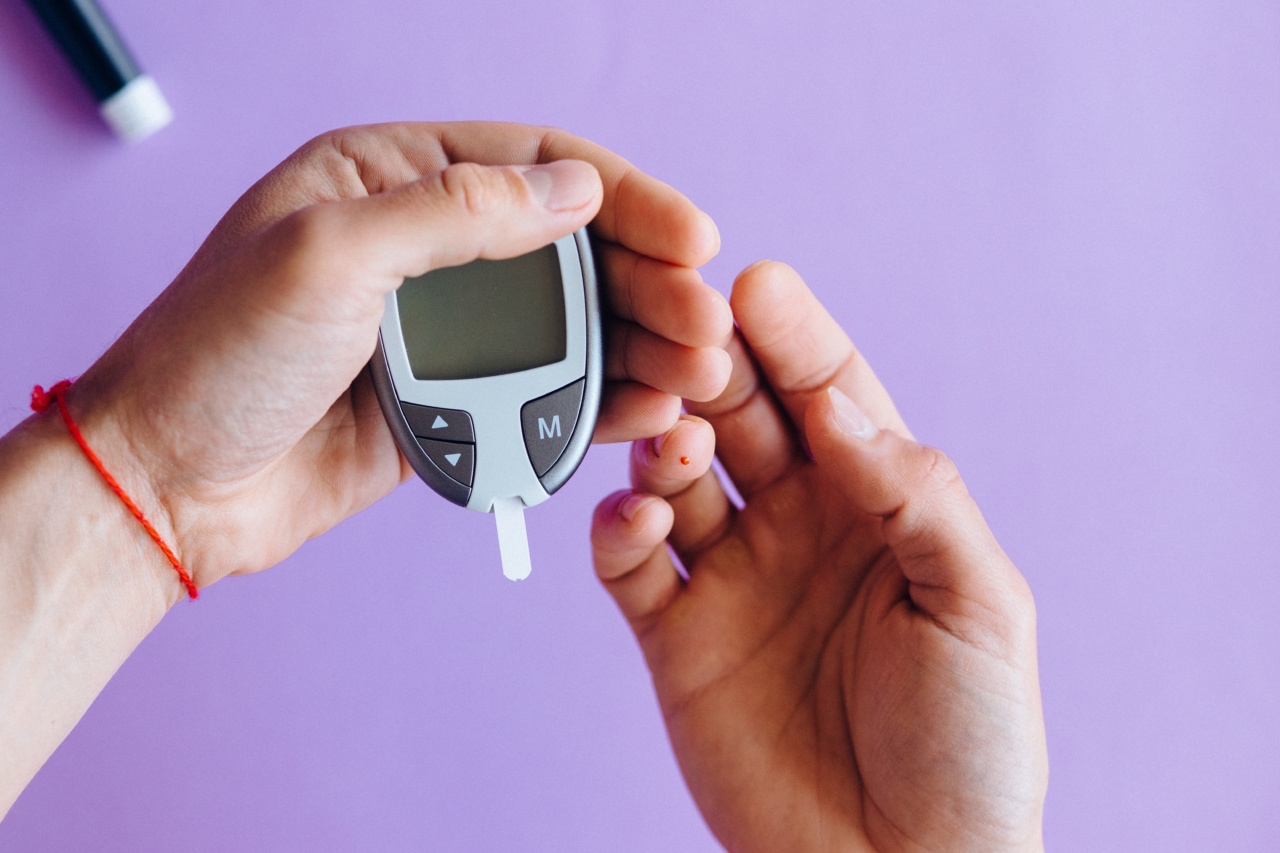Diabetes is a chronic metabolic disorder characterized by elevated blood sugar levels. It affects millions of people worldwide and can lead to serious complications if not properly managed.
One common challenge faced by individuals with diabetes is controlling blood sugar spikes that occur after meals. These spikes can be detrimental to overall blood sugar management and may increase the risk of long-term complications.
Understanding Blood Sugar Spikes
When we consume carbohydrates, our body breaks them down into glucose, which is then absorbed into the bloodstream. This causes blood sugar levels to rise.
In individuals with diabetes, the body struggles to regulate blood sugar effectively, resulting in higher spikes after meals. These spikes can lead to hyperglycemia and its associated risks.
The Importance of Post-Meal Blood Sugar Control
Maintaining optimal blood sugar control is crucial for individuals with diabetes. Post-meal blood sugar control plays a significant role in managing diabetes effectively.
Failing to control blood sugar spikes can have several detrimental effects, including:.
1. Worsening of Diabetes Symptoms
Failure to manage post-meal blood sugar spikes can cause symptoms of diabetes to worsen. These symptoms can include increased thirst, frequent urination, fatigue, and blurred vision.
2. Increased Risk of Cardiovascular Complications
High blood sugar levels, particularly after meals, can put stress on the cardiovascular system. This can increase the risk of heart disease, stroke, and other cardiovascular complications.
3. Impact on Quality of Life
Uncontrolled blood sugar spikes after meals can significantly affect an individual’s quality of life. They may experience difficulty concentrating, reduced energy levels, and mood swings, impacting their productivity and overall well-being.
Managing Blood Sugar Spikes with Sanofi’s Medication
Sanofi, a leading pharmaceutical company, provides several medications that can help individuals with diabetes control blood sugar spikes after meals. These medications work through different mechanisms to regulate blood sugar levels effectively.
Some examples include:.
1. Sulfonylureas
Sulfonylureas are a class of medication that stimulates the pancreas to release more insulin. Insulin helps transport glucose from the bloodstream into cells, thus reducing blood sugar spikes after meals.
Popular sulfonylureas offered by Sanofi include glimepiride and glipizide.
2. DPP-4 Inhibitors
DPP-4 inhibitors work by blocking an enzyme known as dipeptidyl peptidase-4. This enzyme breaks down incretin hormones, which are responsible for stimulating insulin release and reducing glucagon secretion.
By inhibiting DPP-4, these medications help regulate blood sugar levels after meals. Popular DPP-4 inhibitors from Sanofi include sitagliptin and saxagliptin.
3. GLP-1 Receptor Agonists
GLP-1 receptor agonists mimic the action of incretin hormones and help stimulate insulin release after meals. They also slow down gastric emptying, which can further reduce blood sugar spikes.
Sanofi offers GLP-1 receptor agonists such as lixisenatide and exenatide.
4. SGLT2 Inhibitors
SGLT2 inhibitors work by preventing glucose reabsorption in the kidneys, resulting in increased glucose excretion in urine. By reducing glucose levels in the bloodstream, these medications can help control blood sugar spikes after meals.
Popular SGLT2 inhibitors provided by Sanofi include dapagliflozin and empagliflozin.
Lifestyle Modifications for Enhanced Results
In addition to medication, individuals with diabetes can also make lifestyle modifications to improve blood sugar control and reduce post-meal blood sugar spikes. These modifications include:.
1. Eating a Balanced Diet
Consuming a diet that is rich in whole grains, lean proteins, fruits, vegetables, and healthy fats can help regulate blood sugar levels after meals. Avoiding sugary beverages and processed food is also advisable.
2. Portion Control
Managing portion sizes is important to prevent excessive carbohydrate intake, which can lead to higher post-meal blood sugar spikes. Utilizing tools like measuring cups and food scales can help in accurate portion control.
3. Regular Physical Activity
Engaging in regular physical activity can enhance insulin sensitivity and promote better blood sugar control, including after meals. Aim for a combination of cardiovascular exercises and strength training for optimal results.
4. Stress Management
Chronic stress can have a negative impact on blood sugar levels. Practicing stress management techniques such as mindfulness meditation, deep breathing exercises, or engaging in hobbies can help reduce stress and improve blood sugar control.
Talk to Your Healthcare Provider
While Sanofi’s medications can be effective in controlling blood sugar spikes after meals, it is essential to consult with a healthcare provider to determine the most appropriate treatment plan.
They will consider individual needs, medical history, and other factors to tailor a treatment regimen that optimally manages blood sugar levels.
Conclusion
Controlling blood sugar spikes after meals is crucial for individuals with diabetes to effectively manage their condition and minimize the risk of complications.
Sanofi’s wide range of medications, combined with lifestyle modifications, offer a comprehensive approach to blood sugar control. By working closely with healthcare providers and implementing strategies to manage post-meal blood sugar spikes, individuals with diabetes can lead healthier lives and reduce the impact of this chronic condition.































